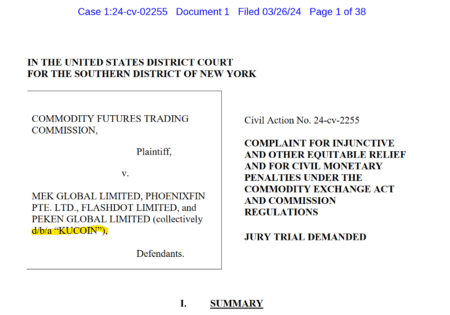The U.S. Securities and Exchange Commission (SEC) has conducted a multi-year investigation into the revenue-sharing arrangement between Coinbase and Circle regarding the USD Coin (USDC) stablecoin. These inquiries began in 2023 under then-SEC Chair Gary Gensler, focusing on how stablecoin revenue was generated, the transparency of disclosures, and the formula used to determine Coinbase’s share of USDC revenue. The SEC requested clarifications on financial statements dating back to 2022, seeking greater transparency in how stablecoin revenue was recognized and split between the two companies.
Coinbase, which manages USDC alongside Circle, has historically been guarded about the details of this relationship. However, recent filings and earnings statements have provided more robust explanations of the revenue model. Notably, Coinbase earns a significant portion of its revenue from assets backing USDC, such as cash and U.S. Treasuries, reporting $910 million in stablecoin revenue for 2024—a 33% increase from the previous year. Circle’s IPO filing revealed that Coinbase receives half of Circle’s residual revenue from USDC reserves after operational expenses.
The SEC’s scrutiny coincided with a period when Coinbase sought to diversify its revenue streams beyond transaction fees, with stablecoin revenue temporarily surpassing transaction revenue in late 2023. The commercial relationship between Coinbase and Circle was further formalized in November 2024, allowing for third-party participation in USDC-related fees.
Regulatory Shift Under the Trump Administration and SEC Chair Paul Atkins
A significant regulatory shift is underway following the return of Donald Trump to the U.S. presidency and the confirmation of Paul Atkins as the new SEC Chair in April 2025. Atkins, regarded as pro-crypto, has pledged to move away from the previous administration’s “regulation by enforcement” approach, which was characterized by aggressive legal actions against crypto exchanges, including Coinbase and Ripple. Instead, Atkins emphasizes the establishment of a clear, solid regulatory framework for digital assets, aiming to foster innovation and position the U.S. as a global leader in crypto markets.
This change in regulatory philosophy is expected to resolve or dismiss many ongoing cases initiated under Gensler and to encourage a more collaborative relationship between the SEC and the crypto industry. The SEC has also signaled openness to regulatory sandboxes, allowing exchanges to experiment with new products, including tokenized securities, under defined guidelines.
The Importance of Stablecoins and the Stablecoin Market
Stablecoins are digital assets pegged to stable reserves such as fiat currencies (most commonly the U.S. dollar), designed to minimize price volatility and provide a reliable medium of exchange within the cryptocurrency ecosystem69. They have become indispensable for several reasons:
- Market Stability: Stablecoins offer a safe haven during periods of high volatility, enabling traders and investors to protect their assets and swiftly move between cryptocurrencies and stable assets.
- Liquidity and Efficiency: They enhance liquidity on exchanges and decentralized finance (DeFi) platforms, facilitating quick, low-cost transactions and conversions.
- Global Financial Access: Stablecoins simplify cross-border payments, remittances, and payroll, reducing costs and processing times compared to traditional banking systems.
- Reference Asset: They serve as a benchmark for pricing in the crypto market and underpin a wide range of DeFi applications, from lending to yield farming.
- Financial Inclusion: By providing a stable digital alternative, stablecoins offer access to financial services for unbanked populations worldwide.
The stablecoin market is now a cornerstone of the digital asset economy, with USDC and Tether’s USDT representing the largest dollar-pegged stablecoins. Their combined market capitalization is in the tens of billions, and they account for the majority of on-chain transaction volume globally9. As regulatory clarity improves under the new SEC leadership, the stablecoin sector is expected to see further growth, innovation, and competition, with new entrants and products likely to emerge.
Conclusion
The SEC’s longstanding probe into Coinbase and Circle’s USDC revenue-sharing arrangement highlights the critical intersection of regulatory scrutiny and financial innovation in the stablecoin market. With the Trump administration and Paul Atkins at the helm, the SEC is poised to adopt a more constructive regulatory approach, potentially unlocking new growth opportunities for U.S.-based digital asset firms and reinforcing the pivotal role of stablecoins in the global financial system.





